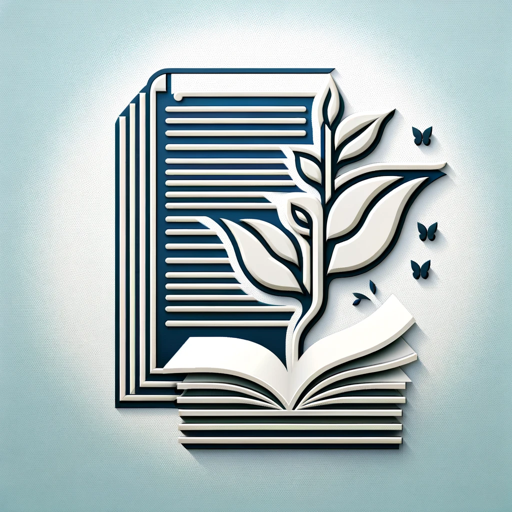Text Formatter-text reformatter for various styles.
AI-powered tool to reformat text instantly.
Please format this in three styles:
Reformat this sentence:
Style this text:
Transform this phrase:
Related Tools
Load More
Text Formatter
Take any text in any format and turn it into beautiful markdown

Doc Styler
Expert in Word doc formatting. Just paste in your text!

Snazzy Looking Copy
Enhances sales and email copy with advanced formatting and style, without altering text and using WYSIWYG Markdown

Style Formatter Expert
Formatea textos con estilo y ofrece contexto experto en tono casual.

Code Formatter
I'm a software engineer focused on code formatting and organization.

排版大师
提升文字易读性,美化排版✅
20.0 / 5 (200 votes)
Introduction to Text Formatter
Text Formatter is a specialized tool designed to reformat a given text into multiple writing styles. Its primary function is to take a single piece of text and transform it into three specific styles: Formal, Informal, and Formal with Simple Words. This is particularly useful for users who need to convey the same message to different audiences, tailoring the tone and complexity of language to suit various needs. For example, if a user needs to communicate a message both in a professional setting (requiring formal language) and in casual communication (requiring informal language), Text Formatter helps streamline the process. The tool ensures consistency of content across these styles while adjusting tone and complexity appropriately.

Main Functions of Text Formatter
Formal Style Reformatting
Example
A professional report or business email requiring polished, sophisticated language.
Scenario
A manager is drafting an email to corporate executives to propose a new business strategy. Text Formatter helps transform the message into a formal style, ensuring that the tone is professional and the language is suitably structured for high-level communication.
Informal Style Reformatting
Example
A casual message or social media post requiring relaxed, conversational language.
Scenario
A person needs to announce an event to a group of friends via a casual text message. Using Text Formatter, they can quickly adjust the tone to make it friendly and approachable, ensuring the message sounds natural and engaging.
Formal with Simple Words Reformatting
Example
A public announcement or educational content where clarity and simplicity are paramount.
Scenario
A government agency needs to communicate safety guidelines to the general public, ensuring the language is formal yet accessible to all reading levels. Text Formatter simplifies complex terms without losing the professional tone, making it easier for a wider audience to understand.
Ideal Users of Text Formatter
Business Professionals
Executives, managers, and corporate communicators who need to convey the same message to different stakeholders, adjusting formality depending on the audience (e.g., senior leadership, employees, or clients). They benefit by saving time while ensuring the appropriate tone for each recipient group.
Educators and Content Creators
Teachers, writers, and content developers who need to create materials suited to different audiences. Whether they're preparing lesson plans, writing articles, or posting online, they can use Text Formatter to quickly adjust complexity and formality for students, readers, or the general public.

How to Use Text Formatter
1
Visit aichatonline.org for a free trial without login, no need for ChatGPT Plus.
2
Input the text you want to reformat into the tool's text box.
3
Choose from the three available reformatting styles: Formal, Informal, or Formal with Simple Words.
4
Click 'Submit' to instantly receive your text reformatted in all three styles.
5
Review the reformatted text, and copy or adjust as necessary for your specific use case.
Try other advanced and practical GPTs
SEO Helper ABO
AI-powered SEO for Your Content.

Crypto Force
AI-powered cryptocurrency analysis platform.

Detect AI Generated Images
AI-Powered Detection of Fake Images

AI Text Refine & Detect
AI-Powered Text Refinement & Detection

AI Detect
Detect AI-generated text effortlessly

Mail Secretary
AI-powered email drafting made easy.

Abogado jurídico
AI-powered legal insights and strategy.

parent help
AI-powered parenting guidance

JSON Translator
AI-powered JSON Translation, Simplified.

SRT Translate
AI-powered subtitle translation made easy.

ChatUU Translate
AI-powered translations for natural communication.
Medi Translate
AI-powered precision translation, made easy.

- Academic Writing
- Marketing Copy
- Business Emails
- Casual Communication
- Content Simplification
Text Formatter Q&A
What does Text Formatter do?
Text Formatter reformats any given text into three styles: Formal, Informal, and Formal with Simple Words. It allows users to tailor content for various audiences and applications, enhancing clarity and appropriateness of tone.
Do I need to create an account to use Text Formatter?
No, there’s no need to create an account or have a ChatGPT Plus subscription. You can simply visit the site and start using the service right away.
What are common use cases for Text Formatter?
Text Formatter is commonly used for academic writing, business communication, personal messaging, marketing copy, and simplifying complex text for broader audiences.
Can Text Formatter be used for multilingual texts?
At present, Text Formatter primarily supports English language texts. However, it can handle text in other languages with varying levels of effectiveness depending on the structure and complexity.
How does Text Formatter handle different writing styles?
The tool is designed to reformat text in three distinct styles: Formal, for professional or academic purposes; Informal, for casual and conversational tone; and Formal with Simple Words, for clarity and accessibility to non-specialists.